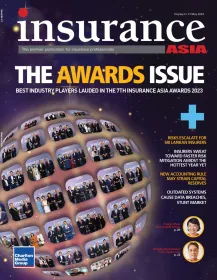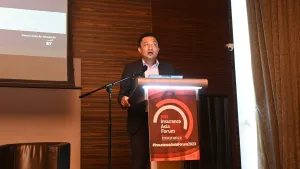
APAC’s insurance rates in Q4’23 flat, rises 2% globally
This is the 25th consecutive quarter composite rates climbed.
Asia Pacific’s insurance pricing rates were unchanged in the fourth quarter of 2023, marking the third quarter in a row for Asia with a downward trend for the Pacific markets, according to Marsh’s Global Insurance Market Index.
Globally, commercial insurance rates increased 2% during the October to December period. In the previous quarter, rates stood at 3%. This has been the longest trend of increases since the launch of the index in 2012, and has been rising for 25 consecutive quarters.
“At a time of much global economic uncertainty, clients will welcome the increased stability in insurance rates – especially for property exposures – and increased competition from insurers for well-managed risks,” said Pat Donnelly, President of Marsh Specialty and Global Placement.
Rates remained consistent across most regions, with pricing decreases in financial and professional lines and a small decrease in cyber insurance rates. Moderating rate increases for property risks were seen due to increased competition despite strong demand and ongoing losses.
Average rates were flat in the UK, Canada, Asia, and Pacific, increased by 3% in the US, by 4% in Europe, India, Middle East & Africa, and by 8% in Latin America and the Caribbean.
Global property and casualty insurance rates increased by 6% and 3%, respectively.
Meanwhile, financial and professional lines saw a 6% decrease, driven by rate reductions and heightened competition. Similarly, cyber insurance rates globally decreased by 3%, marking only the second quarter of an average decrease since 2018.
Insurers express concerns about inflation's impact on asset values and claims costs during renewal discussions.
Asia’s performance
Asia’s property rates climbed 2% amidst insurers’ continuous monitoring of CAT exposures – especially in Japan, Taiwan, and the Philippines. This drove insurers to bump up capacity in the region.
Casualty, likewise, climbed 2%. Rates were favourable for clients in the region, particularly those with localised exposure. Compensation rates of auto liability and workers stayed stable.
Financial and professional lines rates in Asia dropped by 6%. Directors and officers (D&O) liability rates continued their decline, with more insurer capacity accessible.
ALSO READ: Excess of loss pricing in APAC reverts to pre-2023 levels amid market stabilisation
Primary capacity remained limited, but excess layers expanded, and insurers showed interest in traditionally challenging risks like US listed companies.
Rates remained steady for the financial institution (FI) sector, with enhancements in terms and coverage.
Cyber insurance rates remained unchanged. Insurer competition intensified, leading to rate stability and expanded capacity. Underwriters heightened scrutiny on digital supply chain dependence and war exclusions.
Pacific’s performance
Property insurance rates remained unchanged, marking the first time in 26 quarters without an increase in average rates.
Loss-affected and catastrophe-exposed insureds saw rate hikes, while insurer competition and capacity increased.
Casualty insurance rates increased by 4%. Insurers introduced new capacity and program restructuring, offering more options for buyers. Scrutiny continued in areas like contractor injury, US exposures, PFAs, and ESG.
Financial and professional lines rates decreased by 5%. D&O liability rates dropped notably, with strong competition for primary and excess layers. Insurers monitored claims trends related to generative AI use.
Cyber insurance rates remained stable, with moderated rates at renewal becoming common. Increased competition expanded client options. Insurers focused on catastrophic risk, privacy regulations, and ransomware, seeking detailed risk information, especially on ransomware threat mitigation.











 Advertise
Advertise












